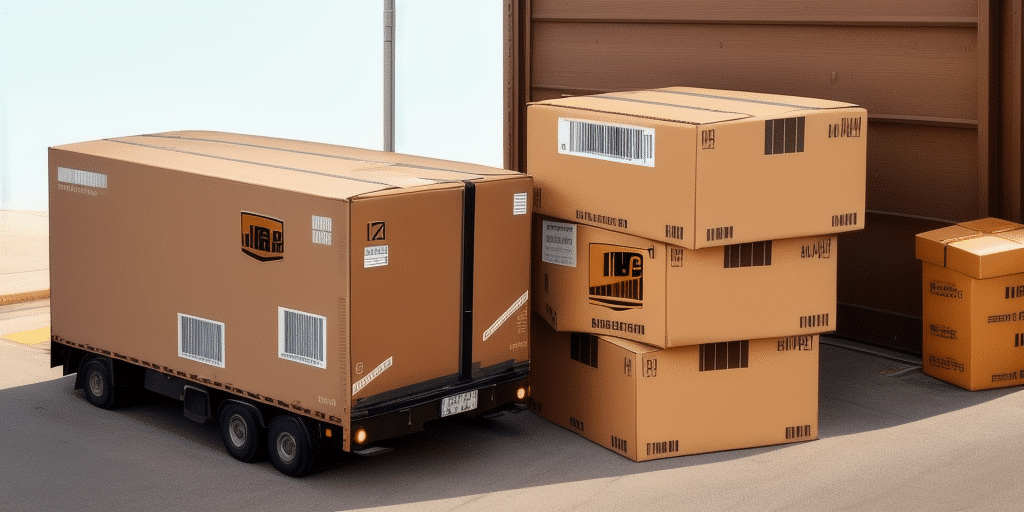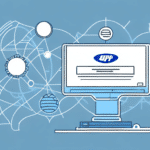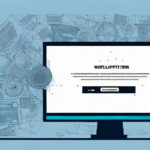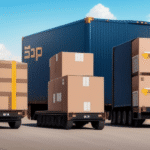How to Upgrade to UPS WorldShip Version 20
Upgrading to the latest software version is crucial for maintaining efficiency and leveraging new features. If you're a frequent user of UPS WorldShip, transitioning to Version 20 can enhance your shipping processes significantly. This guide provides a comprehensive walkthrough of upgrading to UPS WorldShip Version 20, including system preparation, installation steps, customization of shipping labels, and employee training to maximize the benefits of the new features.
Benefits of Upgrading to UPS WorldShip Version 20
Upgrading to UPS WorldShip Version 20 offers numerous advantages that streamline your shipping operations:
- Enhanced User Interface: A more intuitive and user-friendly interface improves navigation and reduces the learning curve.
- Faster Processing Speeds: Increased efficiency in handling shipments allows for quicker turnaround times.
- Advanced Customization and Reporting: Greater flexibility in customizing shipping labels and generating detailed reports.
- Improved Integration: Seamless data transfer between UPS WorldShip and other shipping or logistics software.
- Cost Savings: Automatic comparison of rates from multiple carriers helps in selecting the most cost-effective shipping options.
These improvements not only enhance operational efficiency but also contribute to better tracking and reporting capabilities, ensuring a more reliable shipping experience.
Enhanced User Interface
The redesigned interface in Version 20 makes it easier to navigate through the software, reducing the time spent on training and increasing productivity. According to a recent UPS technology report, users report a 25% increase in efficiency due to the improved UI.
Advanced Customization and Reporting
With the ability to customize shipping labels and generate detailed reports, businesses can tailor the software to meet their specific needs. This customization ensures that important information is readily accessible, aiding in better decision-making and streamlined operations.
Preparing Your System for the Upgrade
Ensuring your system meets the necessary requirements is a critical first step in the upgrade process. Below are the key requirements and preparation steps:
- Software Subscription: A current subscription to UPS WorldShip is mandatory.
- Operating System: Windows 11 is recommended for optimal performance.
- Hardware Requirements: Minimum of 8GB RAM and 2GB of available hard drive space.
Before initiating the upgrade, it's essential to back up all critical data to prevent any loss during the installation. Additionally, temporarily disabling antivirus software can prevent potential conflicts. Ensure all other programs are closed, and any unsaved work is saved to facilitate a smooth installation.
System Compatibility Check
Verify that your system meets all the minimum requirements by consulting the official UPS WorldShip system requirements. This ensures that the software runs efficiently without any performance issues.
Downloading and Installing UPS WorldShip Version 20
The installation process is straightforward. Follow these steps to download and install UPS WorldShip Version 20:
- Visit the official UPS WorldShip download page.
- Download the installer file suitable for your system.
- Run the installer and follow the on-screen prompts.
- Restart your system if prompted to complete the installation.
Ensure your system is fully updated with the latest Windows updates and drivers to prevent any installation issues. Failure to meet these prerequisites may lead to installation errors or reduced software performance.
Configuring Settings for Optimal Performance
After installation, configuring your settings appropriately is essential to optimize performance. Key areas to focus on include:
- Shipping Labels: Customize labels to include essential information and branding elements.
- Printer Settings: Adjust settings to ensure labels print correctly and efficiently.
- Tracking and Reporting: Configure tracking options and set up detailed reporting to monitor shipping activities.
Integration with e-commerce platforms like Shopify and WooCommerce can further streamline your shipping process by automatically importing orders and customer information, thereby minimizing errors and saving time.
Integration with E-Commerce Platforms
Connecting UPS WorldShip with platforms such as Shopify and WooCommerce allows for automatic synchronization of order data, which enhances accuracy and efficiency. Refer to the UPS integration guides for detailed instructions.
Enhancing Shipment Security
Configure shipment security settings to include options like signature requirements upon delivery and insurance for high-value items. These settings help ensure that packages are delivered safely and provide peace of mind for both you and your customers.
Exploring the New User Interface of UPS WorldShip Version 20
The new user interface in Version 20 is designed to enhance user experience with streamlined navigation and customizable layouts. Key features include:
- Redesigned Home Screen: Provides quick access to frequently used features and a more organized layout.
- Improved Search Functionality: Makes it easier to locate specific shipments or orders with enhanced filtering options.
- Customizable Layouts: Allows users to rearrange the interface to suit their workflow preferences.
Customizing the Interface
Users can personalize the interface by rearranging widgets on the home screen, adding or removing fields in shipment entry screens, and creating custom labels and reports. This level of customization ensures that the software aligns perfectly with your business needs, thereby increasing efficiency.
Maximizing Advanced Features in UPS WorldShip Version 20
UPS WorldShip Version 20 offers a range of advanced features designed to enhance shipping operations:
- Carrier Integration: Connect with multiple carriers to expand shipping options and secure the best rates.
- Advanced Reporting: Generate comprehensive reports to analyze shipping performance and costs.
- Automated Shipping Rules: Set up rules to automate shipping method selection based on package weight, destination, and other criteria.
Automating Shipping Processes
By setting up automated shipping rules, businesses can reduce manual errors and save time. For example, the software can automatically select the most cost-effective carrier based on predefined parameters, ensuring optimal shipping costs and efficiency.
Customizing Shipping Labels and Packing Slips
Customization options for shipping labels and packing slips allow businesses to incorporate their branding elements, such as logos and color schemes. This not only reinforces brand identity but also ensures that all necessary information is clearly displayed, facilitating accurate deliveries.
Troubleshooting Common Issues During the Upgrade
Despite careful preparation, some issues may arise during the upgrade process. Common challenges include:
- System Compatibility Issues: Ensure all system requirements are met to prevent incompatibility.
- Installation Errors: Follow the installation guide meticulously and ensure a stable internet connection during the download and installation.
- Data Loss or Corruption: Always back up critical data before starting the upgrade to prevent loss.
If you encounter issues, consult the UPS support center or refer to user forums for troubleshooting tips. Additionally, checking the user manual for common errors can provide quick solutions to many problems.
Resolving Installation Failures
Installation failures can be caused by insufficient disk space, outdated drivers, or conflicting software. Verify that your system meets all requirements and that all drivers are up to date. If conflicts persist, consider disabling unnecessary software during installation.
Customizing Your Shipping Labels in UPS WorldShip Version 20
Customization of shipping labels is essential for branding and operational efficiency. With UPS WorldShip Version 20, you can:
- Adjust label layout, fonts, and colors to match your brand identity.
- Add logos and other branding elements to shipping documents.
- Include critical information such as order numbers, product details, and shipping instructions.
Creating templates for frequently shipped items can save time and ensure consistency across all shipments.
Using the Label Designer
The built-in Label Designer allows you to tailor your shipping labels precisely. Access this feature through the "Preferences" section, where you can modify various aspects of the label to suit your business needs.
Leveraging Reporting Capabilities in UPS WorldShip Version 20
UPS WorldShip Version 20 offers robust reporting tools that provide valuable insights into your shipping operations:
- Trend Analysis: Identify patterns in shipping activity to optimize processes.
- Carrier Performance: Monitor and compare the performance of different carriers.
- Cost Analysis: Analyze shipping costs to identify areas for budget optimization.
Customized reports allow you to focus on specific data points relevant to your business, enabling informed decision-making and strategic planning.
Generating Customized Reports
Utilize the report generation feature to create tailored reports that highlight key performance indicators. These reports can be scheduled regularly or generated on-demand to keep track of shipping metrics effectively.
Integrating Additional Carriers and Shipping Services with UPS WorldShip Version 20
Expanding your shipping options by integrating additional carriers can lead to cost savings and improved service levels. UPS WorldShip Version 20 supports integration with various carriers and shipping services, allowing you to:
- Access a wider range of shipping options to meet diverse customer needs.
- Compare rates and services across multiple carriers for each shipment.
- Consolidate tracking information from different carriers into a single platform.
Before integrating additional carriers, ensure compatibility by consulting the UPS integration documentation or working with a UPS representative.
Testing Carrier Integrations
After integrating a new carrier, perform test shipments to verify that data is accurately transferred and that there are no conflicts or delays in processing. This step ensures that the integration functions smoothly during regular operations.
Training Your Employees on UPS WorldShip Version 20
Effective training is essential to maximize the benefits of UPS WorldShip Version 20. Consider the following training methods:
- Online Tutorials: Utilize available online resources and video tutorials to familiarize employees with the software.
- On-Site Training Sessions: Conduct hands-on training sessions to address specific business needs and workflows.
- User Manuals: Provide comprehensive user manuals as reference materials for ongoing support.
Collaborate with your UPS representative to arrange specialized training sessions and ensure that your team is fully equipped to utilize all advanced features of the software.
Continuous Learning and Support
Encourage employees to engage in continuous learning by staying updated with new features and best practices. Regular training updates can help in maintaining high levels of proficiency and efficiency.
Conclusion
Upgrading to UPS WorldShip Version 20 is a strategic move for businesses looking to enhance their shipping and logistics operations. By following the steps outlined in this guide, you can ensure a smooth transition, optimize your system settings, and fully leverage the advanced features offered by the latest version. Investing time in training your employees and customizing the software to fit your business needs will result in improved efficiency, cost savings, and a more streamlined shipping process.






















